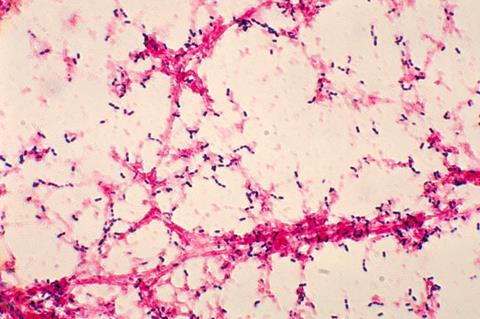A trial of a new vaccine against meningococcal disease, a cause of meningitis and blood poisoning, has found that it is safe and induces a strong immune response across five strains of meningococcal bacteria: A, C, W, Y and X.

The phase 3 trial compared the immune response generated by the new pentavalent vaccine NmCV-5 against that of the licensed quadrivalent MenACWY-D vaccine in 1,800 healthy 2-29-year-olds in Mali and The Gambia.
After 28 days, across all ages, the immune responses generated by a single dose of NmCV-5 were generally higher than those generated by MenACWY-D.
In addition, NmCV-5 induced a strong immune response to the emerging meningococcal X strain for which there is currently no licensed vaccine. The trial found no safety concerns with NmCV-5.
The study, led by a team including researchers from the Medical Research Council (MRC) Unit The Gambia at the London School of Hygiene & Tropical Medicine (LSHTM), and researchers from Bamako in Mali, is published in the New England Journal of Medicine.
Meningitis belt
The World Health Organization (WHO) estimates meningitis caused 250,000 deaths in 2019 and developing affordable vaccines providing broad coverage against meningococcal disease strains is a key part of its Defeating Meningitis by 2030 Global Roadmap.
Issues with supply and affordability have limited use of quadrivalent meningococcal vaccines across the ‘meningitis belt’, a swathe of sub-Saharan Africa at high-risk of epidemics of meningococcal and pneumococcal meningitis. In addition, meningococcal X has emerged with potential to cause epidemics across the ‘meningitis belt’, so a vaccine to prevent against this strain is urgent.
Building on the success of the Meningitis Vaccine Project (which developed MenAfriVac, a meningococcal A vaccine), the Serum Institute of India and PATH developed NmCV-5 with the goal of eliminating meningococcal disease in sub-Saharan Africa.
Affordable vaccines
More cost-effective production methods should mean that NmCV-5 can be made available at lower cost than existing quadrivalent vaccines, overcoming a major stumbling block to it being widely available across the ‘meningitis belt’. The trial was designed to provide WHO with the evidence needed to license the new vaccine for future epidemic control.
Dr Ed Clarke, a paediatrician from the Vaccines and Immunity Theme at MRC Unit The Gambia at LSHTM and co-author, said: “We are excited about the results of this study. We expect NmCV-5 to provide children and young adults with reliable protection against meningitis caused by the meningococcal bacteria. The new vaccine will be a critical tool to interrupting and preventing devastating epidemics of meningitis in the meningitis belt. We hope it will ensure the goal of defeating epidemic meningitis by 2030, set out in the Global Roadmap, becomes a reality.”
Public health priority
Dr Ama Umesi, co-author from MRC Unit The Gambia at LSHTM, said: “Meningitis is a deadly disease with the ability to spread like wildfire in the event of an outbreak, this affects all ages most especially within the meningitis belt region.
“Epidemic preparedness is the way forward in providing available, affordable and accessible vaccines relevant to regions prone to meningitis outbreaks. Having meningitis vaccines should be a public health priority to prevent catastrophic outcomes during an outbreak and would be a game changer in the fight against meningitis.
“As a researcher in the continent, I am hopeful that relevant vaccines for the common strains within the meningitis belt region will be readily available for timely interventions due to the collaboration and teamwork of multicentre trials like ours. Together we can defeat meningitis.”
Vaccinations for the trial took place in June 2021. The 1,800 participants were split into three age groups: 2-10 years, 11-17 years, 18-29 years. All participants were African and 50.7% of participants were female.







No comments yet